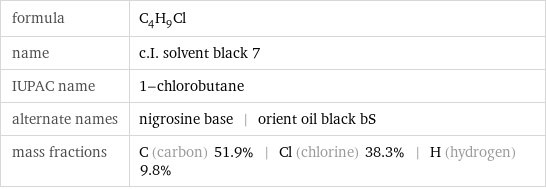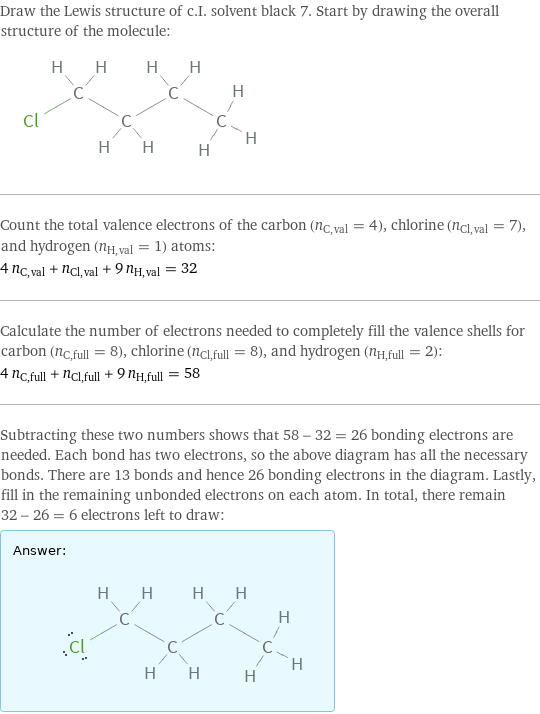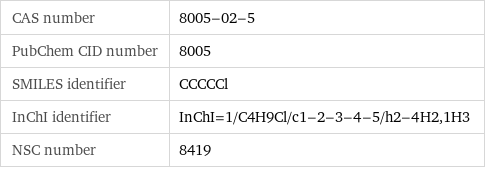Input interpretation

c.I. solvent black 7
Chemical names and formulas

formula | C_4H_9Cl name | c.I. solvent black 7 IUPAC name | 1-chlorobutane alternate names | nigrosine base | orient oil black bS mass fractions | C (carbon) 51.9% | Cl (chlorine) 38.3% | H (hydrogen) 9.8%
Lewis structure

Draw the Lewis structure of c.I. solvent black 7. Start by drawing the overall structure of the molecule: Count the total valence electrons of the carbon (n_C, val = 4), chlorine (n_Cl, val = 7), and hydrogen (n_H, val = 1) atoms: 4 n_C, val + n_Cl, val + 9 n_H, val = 32 Calculate the number of electrons needed to completely fill the valence shells for carbon (n_C, full = 8), chlorine (n_Cl, full = 8), and hydrogen (n_H, full = 2): 4 n_C, full + n_Cl, full + 9 n_H, full = 58 Subtracting these two numbers shows that 58 - 32 = 26 bonding electrons are needed. Each bond has two electrons, so the above diagram has all the necessary bonds. There are 13 bonds and hence 26 bonding electrons in the diagram. Lastly, fill in the remaining unbonded electrons on each atom. In total, there remain 32 - 26 = 6 electrons left to draw: Answer: | |
3D structure

3D structure
Basic properties

molar mass | 92.57 g/mol
Units

Chemical identifiers

CAS number | 8005-02-5 PubChem CID number | 8005 SMILES identifier | CCCCCl InChI identifier | InChI=1/C4H9Cl/c1-2-3-4-5/h2-4H2, 1H3 NSC number | 8419